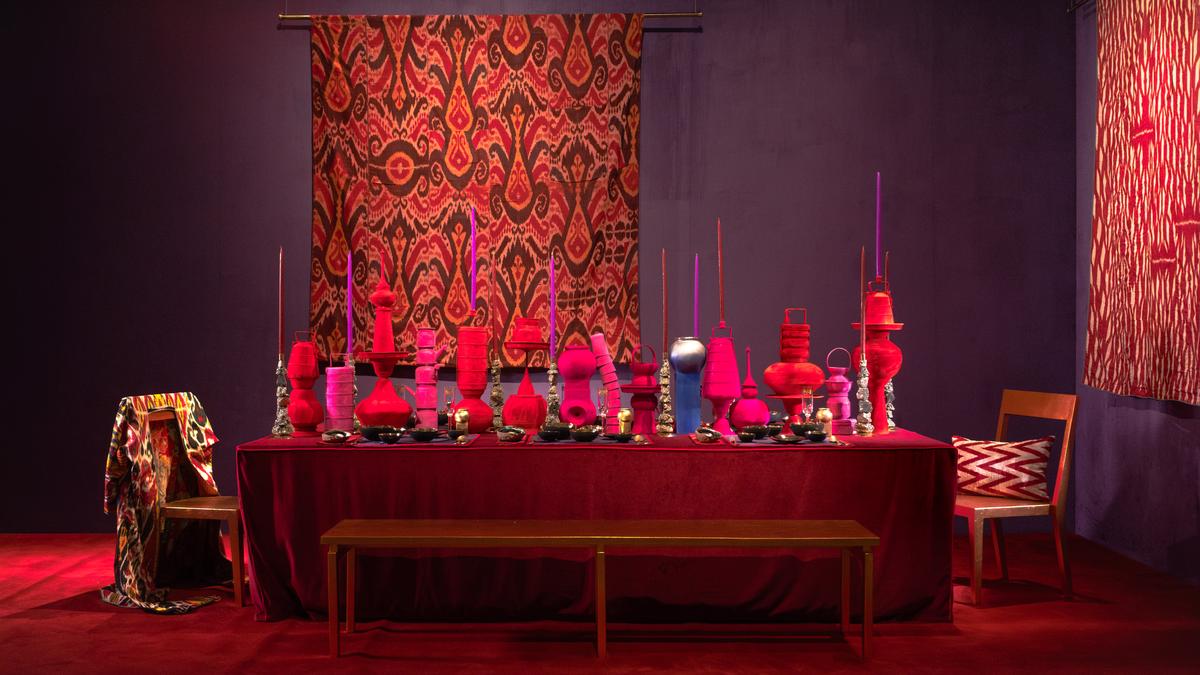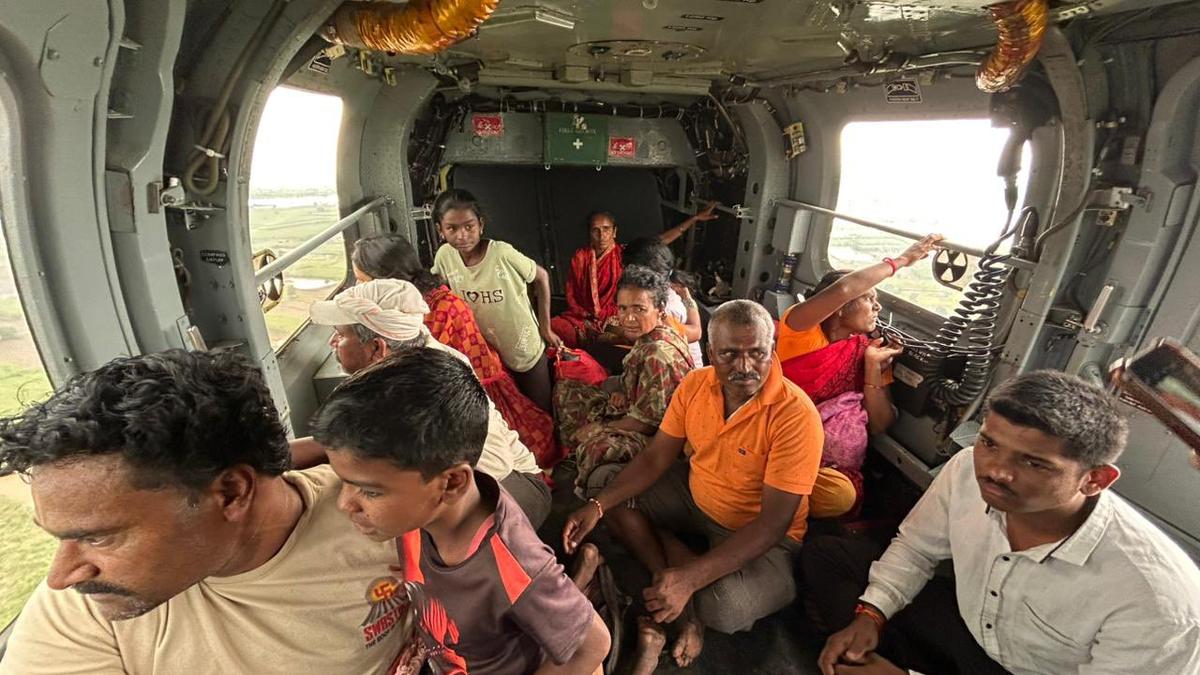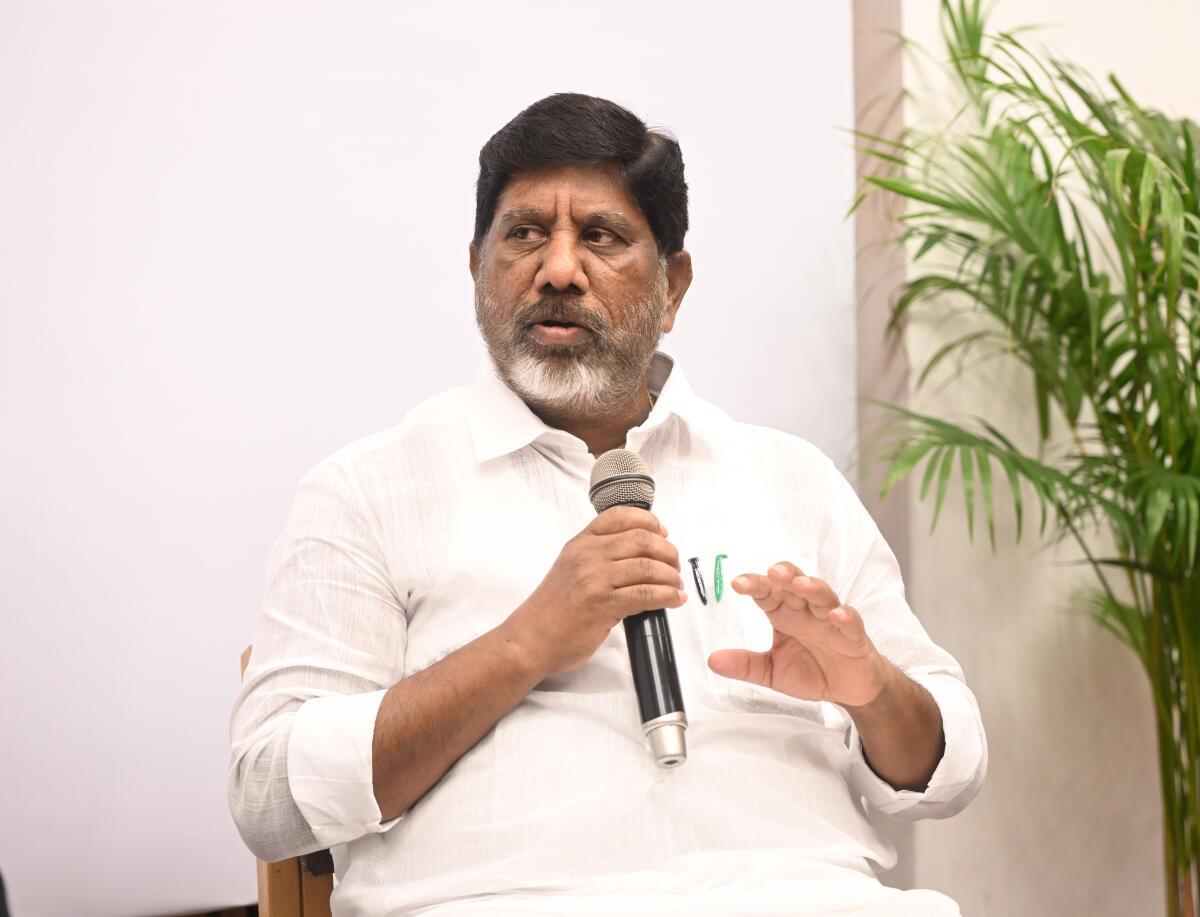If there is one thing that has quietly leapt from Instagram reels into real life, it is the art of the tabletop. What used to be a mere backdrop for sweets, diyas and dinnerware has become the centrepiece — lush, layered, and deeply personal.
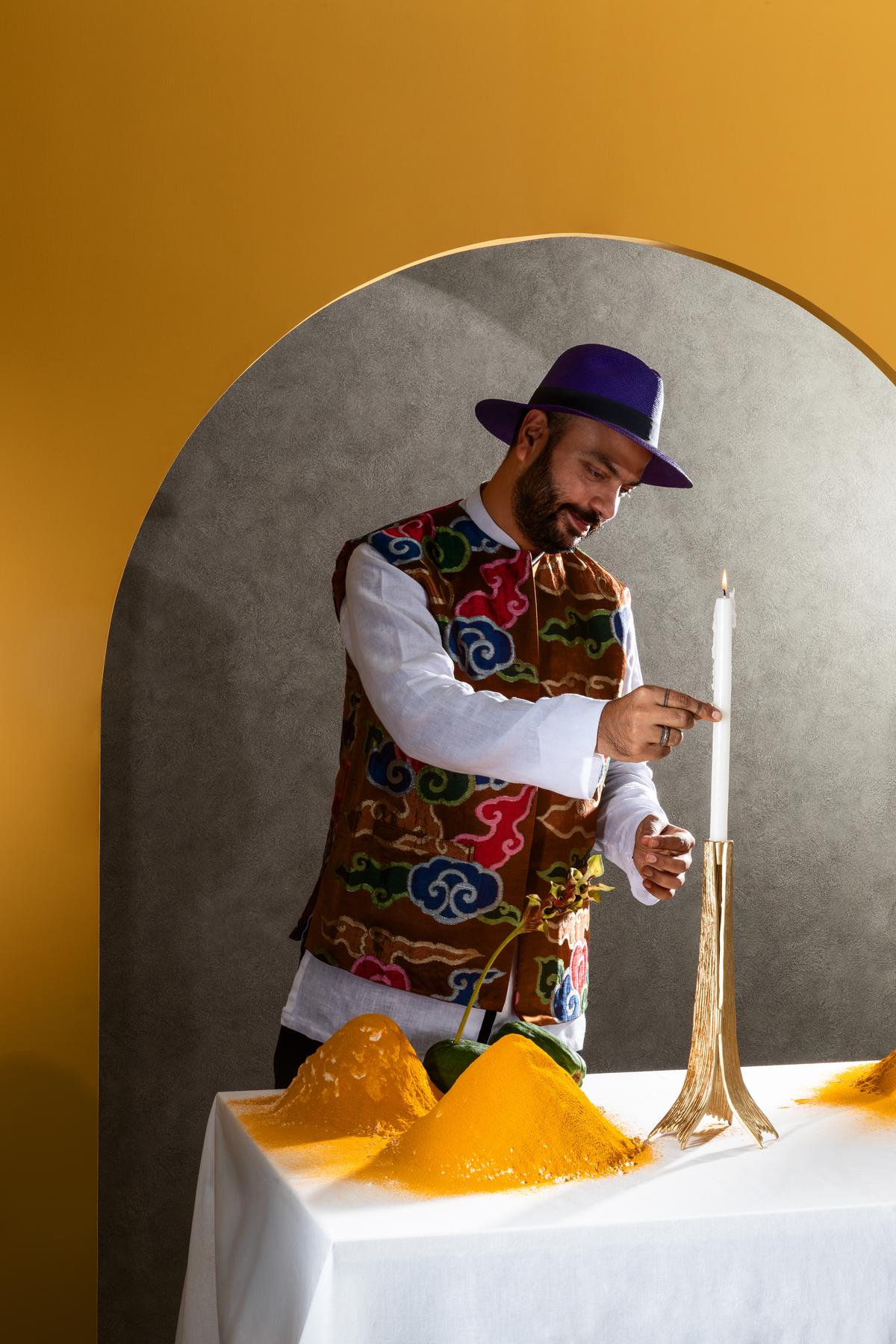
Eeshaan Kashyap for Sarita Handa from 2024
| Photo Credit:
Special arrangement
Traditionally, an Indian Deepavali table meant brass diyas, glass vases, urlis with floating flowers, and mirrored trays. Those classics still endure, and rightly so — they are steeped in heritage and warmth. But increasingly, hosts are experimenting with texture, scale, and storytelling. Think oversized floral installations spilling over the table’s edge, tiered trays of mithai rising above candle clusters, sculptural ceramics, or modern metalwork that echo motifs from the home. The goal is no longer “nice”; it is theatrical.
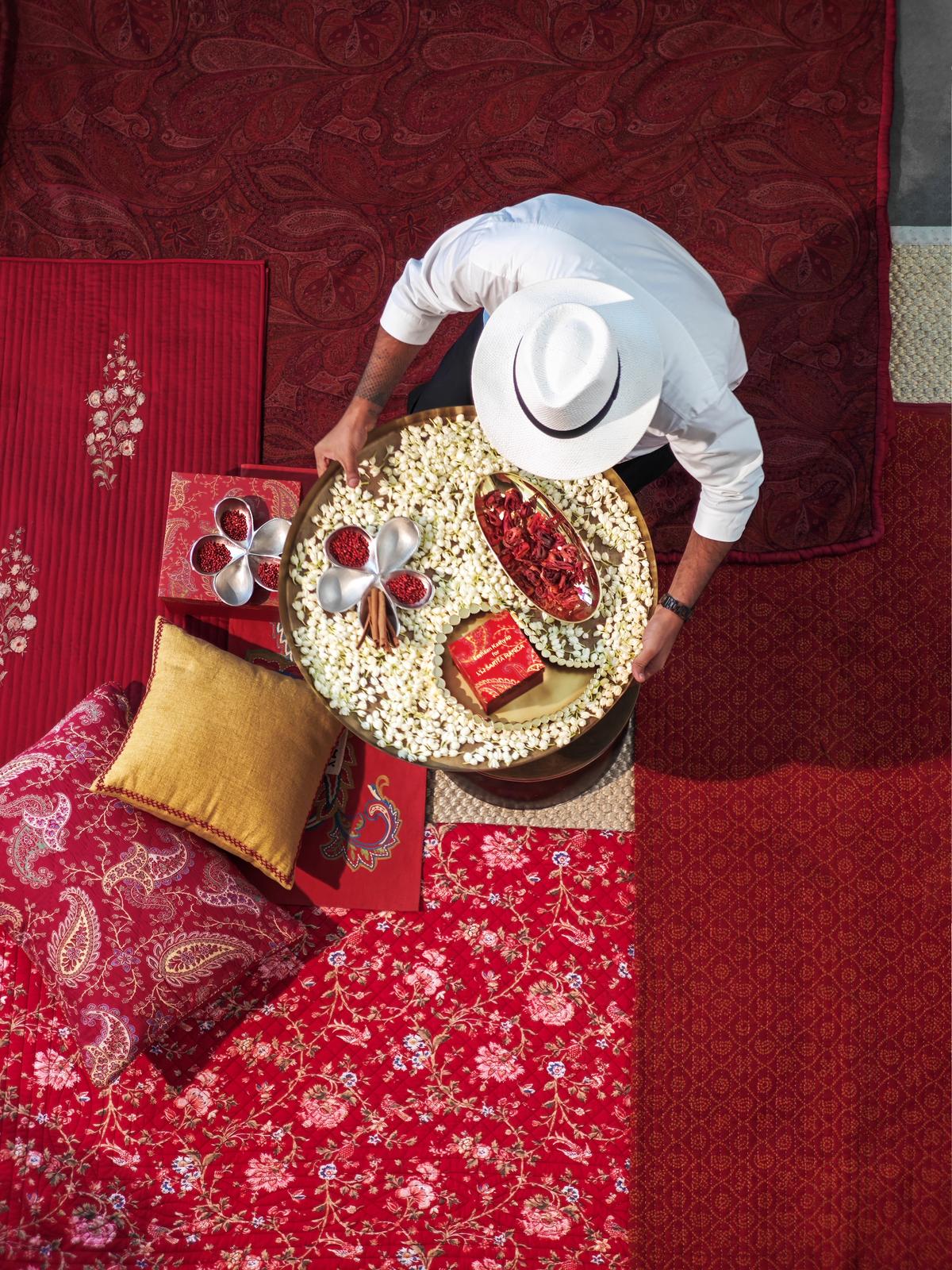
Eeshaan Kashyap for Sarita Handa from 2024
| Photo Credit:
Special arrangement
And if proof were needed that tablescaping has entered the cultural mainstream, look no further than designer Sabyasachi Mukherjee’s grazing tables — now a fixture at his soirées, each one laden with antique vases, porcelain, silverware and foliage under dramatic light.
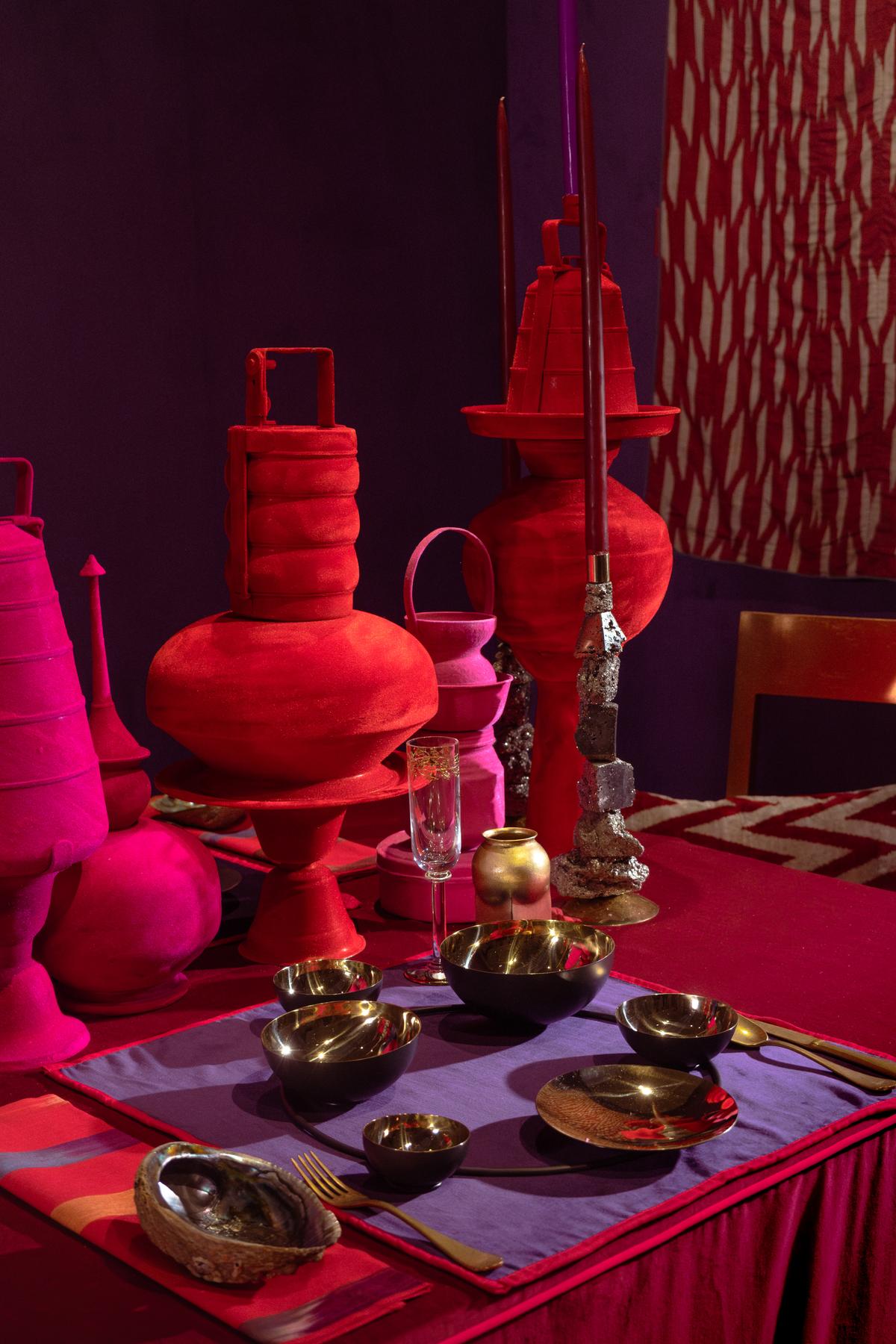
Eeshaan Kashyap for Nilaya Anthology
| Photo Credit:
Special arrangement
“It’s definitely rooted in tradition,” says Eeshaan Kashyap, a Delhi-based multi-disciplinary culinary artist who divides his time between Delhi and Hyderabad. “But the idea of tables today is more about doing something contemporary, deconstructed, and unusual. Rather than going back to what we’ve always done, we’re seeing a lot more experimentation — small plates, mithai boxes used in inventive ways, metal and mitti (mud) coming together — food almost becoming the ingredient of design.”
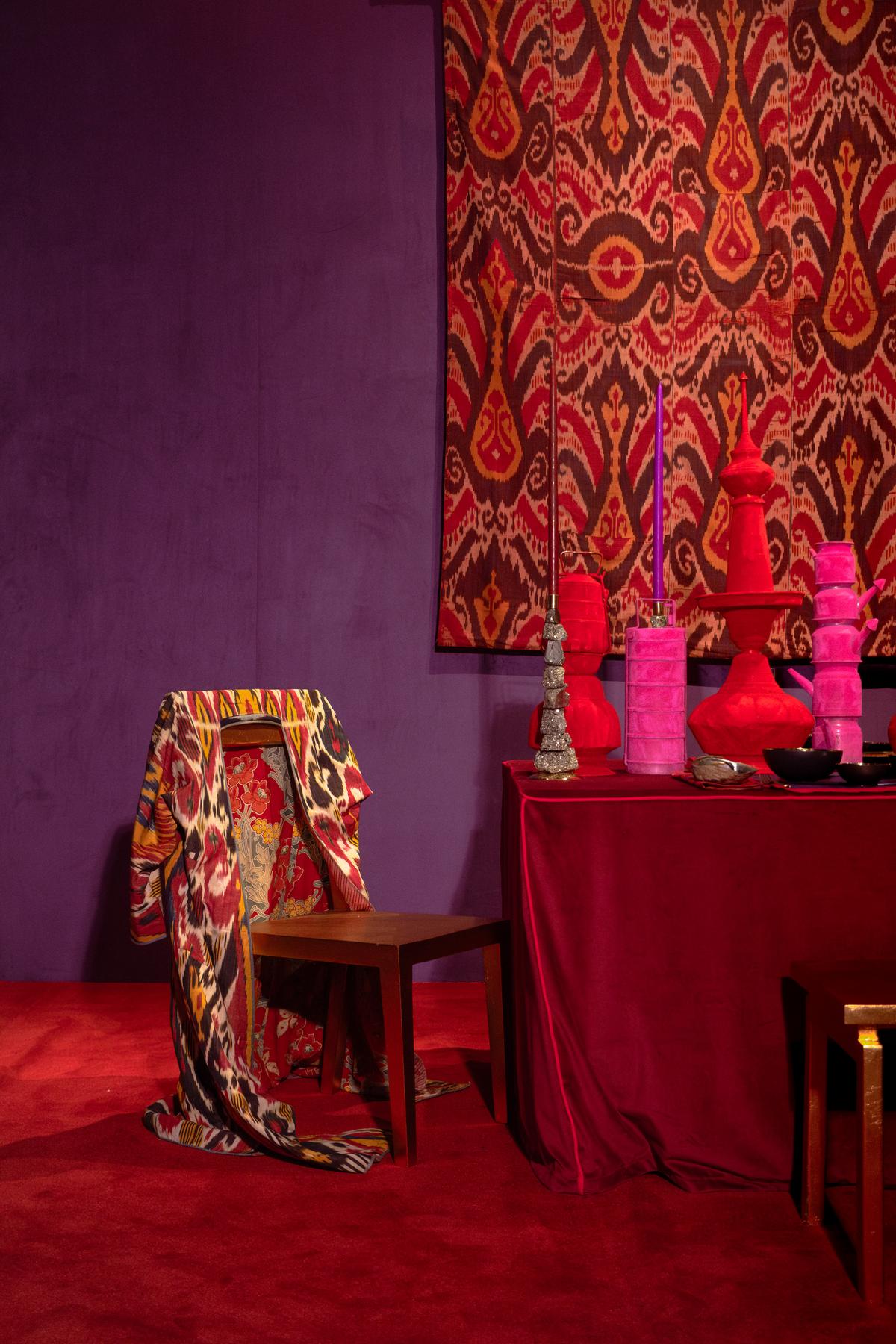
Eeshaan Kashyap for Nilaya Anthology
| Photo Credit:
Special arrangement
At one of his recent projects, Eeshaan created a Deepavali-inspired setup where the entire dining experience unfolded like an installation — a reimagining of thalis through sculptural plating and bursts of colour. “It still celebrated the essence of Deepavali,” he adds, “but in a way that felt fresh, curious and very design-forward.”
The table as canvas
In a showcase titled The Art of Hosting, currently on view till the end of October at Nilaya Anthology in Mumbai, Indian design voices Sona Reddy, Eeshaan Kashyap, and Aneeth Arora of Péro came together to explore how the table can serve as a canvas for culture, instinct, and generosity. Across these immersive settings, the showcase posed a quiet but resonant question: how can design honour the self within a context that is inherently shared?
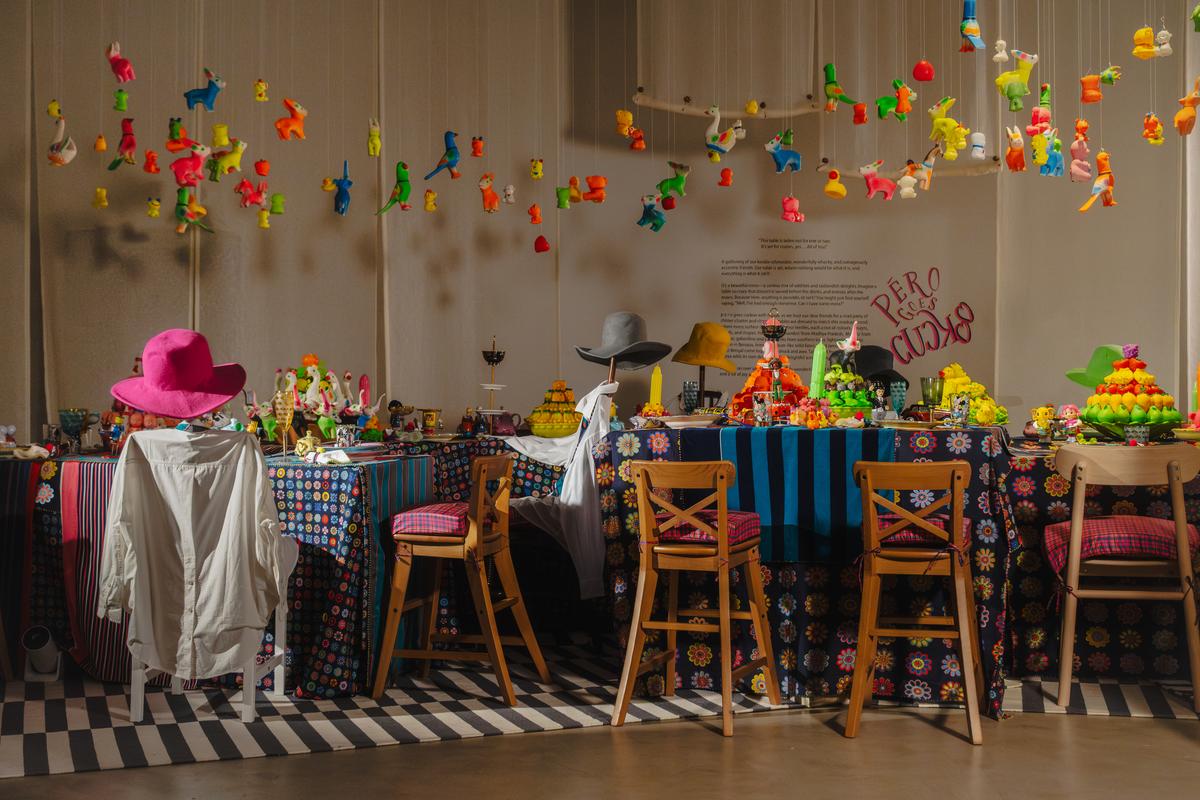
Aneeth Arora for Nilaya Anthology
| Photo Credit:
Special arrangement
For Deepavali, Eeshaan’s reinterpretation of the humble vessel offers inspiration. Pair classic brass thalis with velvet runners, shell-inspired plates, or metallic accents that catch the light. Add sculptural candle stands or raw stones as centrepieces to bring in contrast and depth. It is less about formality and more about imagination — finding new ways to make the ordinary feel extraordinary.
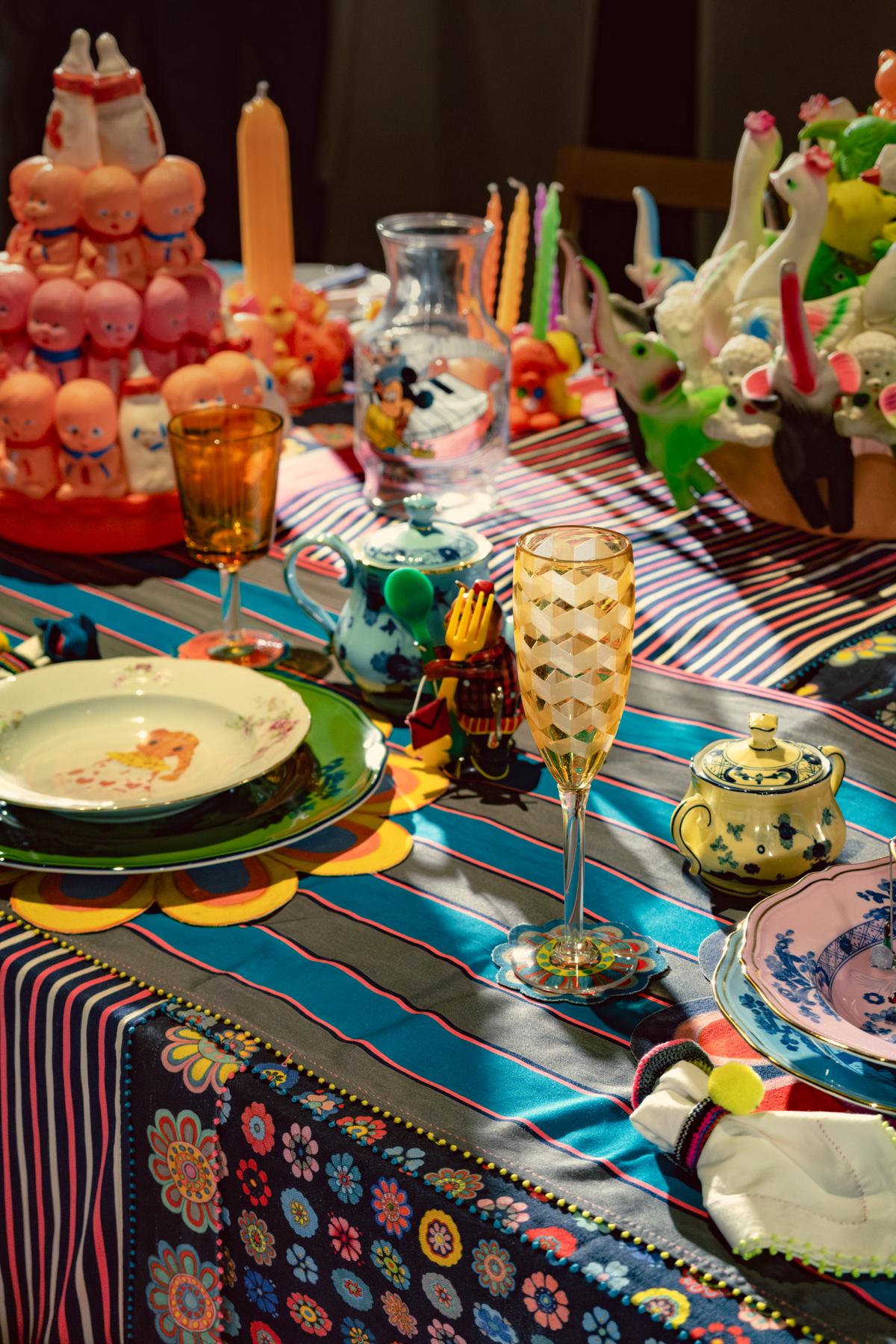
Aneeth Arora for Nilaya Anthology
| Photo Credit:
Special arrangement
For Aneeth Arora, the Delhi-based designer behind Péro, tablescaping is about embracing whimsy — the kind that refuses to take itself too seriously. “Our table is set for a gathering of our kookie schmookie, wonderfully whacky, and outrageously eccentric friends,” she laughs. “It’s where nothing is what it seems, and everything is what it isn’t.”
At The Art of Hosting, her table embodied that spirit — a beautifully chaotic scene where dessert appeared before drinks and mains after entrées. “Why not?” she grins. “Celebrations should be a little mad — a little unexpected.”
The setting was a riot of handwoven textiles: Chanderi from Madhya Pradesh, mashru from Gujarat, taffeta silks from the South, Benaras stripes, and gauzy jamdani from Bengal — each layered to shock and delight. “It was a mad party of chitter-chatter and chaos,” Aneeth smiles, “a world filled with a little mischief and a lot of love.”
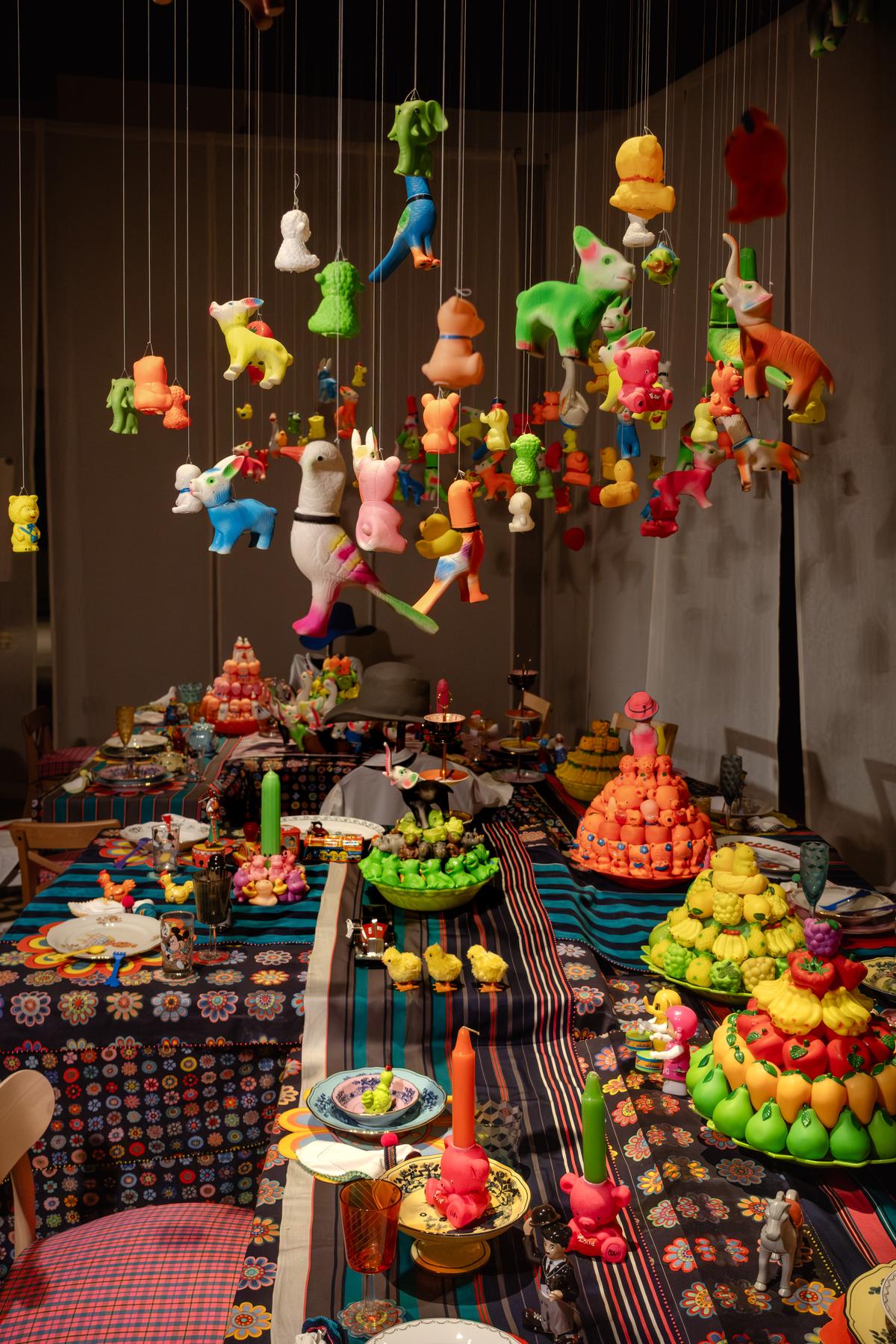
Aneeth Arora for Nilaya Anthology
| Photo Credit:
Special arrangement
Her take is perfect for Deepavali — a reminder that the festive table does not have to be perfect, just personal. Mix patterns, pile on colour, and let your quirks take centrestage.
For Sona Reddy, the Hyderabad-based architect, a table is not just a setting — it is a social catalyst. “The first thing I always look for is a large table,” she says. “I love when everyone can sit together — it keeps the energy in one place. You don’t lose the joy of shared conversation.”
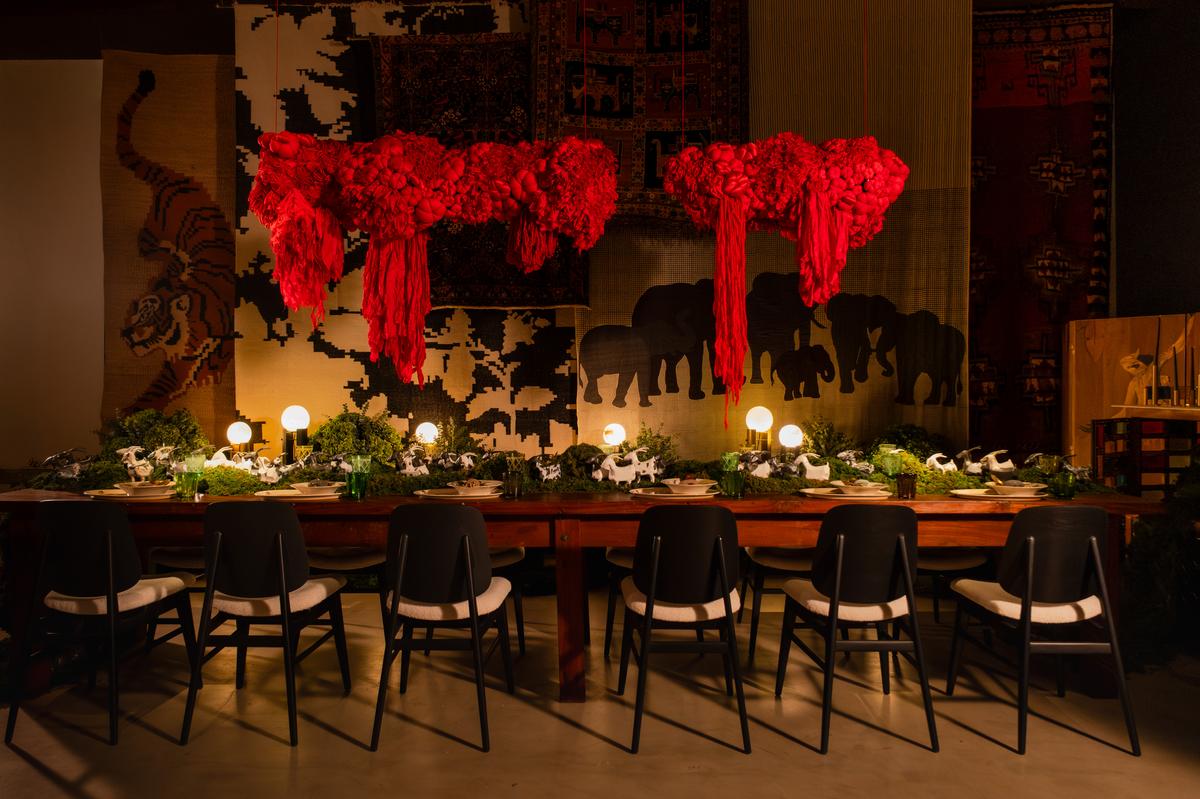
Sona Reddy for Nilaya Anthology
| Photo Credit:
Special arrangement
That instinct shaped her installation Ode to Nilgiris, a tribute to the rolling mountains, misty eucalyptus groves, and rich wildlife of the Nilgiris, where she studied over three decades ago. “Somehow, the Nilgiris just came to me,” she recalls. “I wanted to honour that landscape — its calm, its depth, its sense of memory.”
Her table is a blend of art, craft, and design — embroidered details and sculptural elements in black, white, and gold, layered with moss, ceramics, and texture. Forty-five handcrafted ceramic goats stood amid the greenery, a nod to the domestic and the wild, the real and the remembered. “When you have a strong concept and you vocalise it to your guests before dinner,” she says, “it immediately becomes a conversation starter. Especially when people don’t know each other — it gives them something to connect over, to reflect on.”
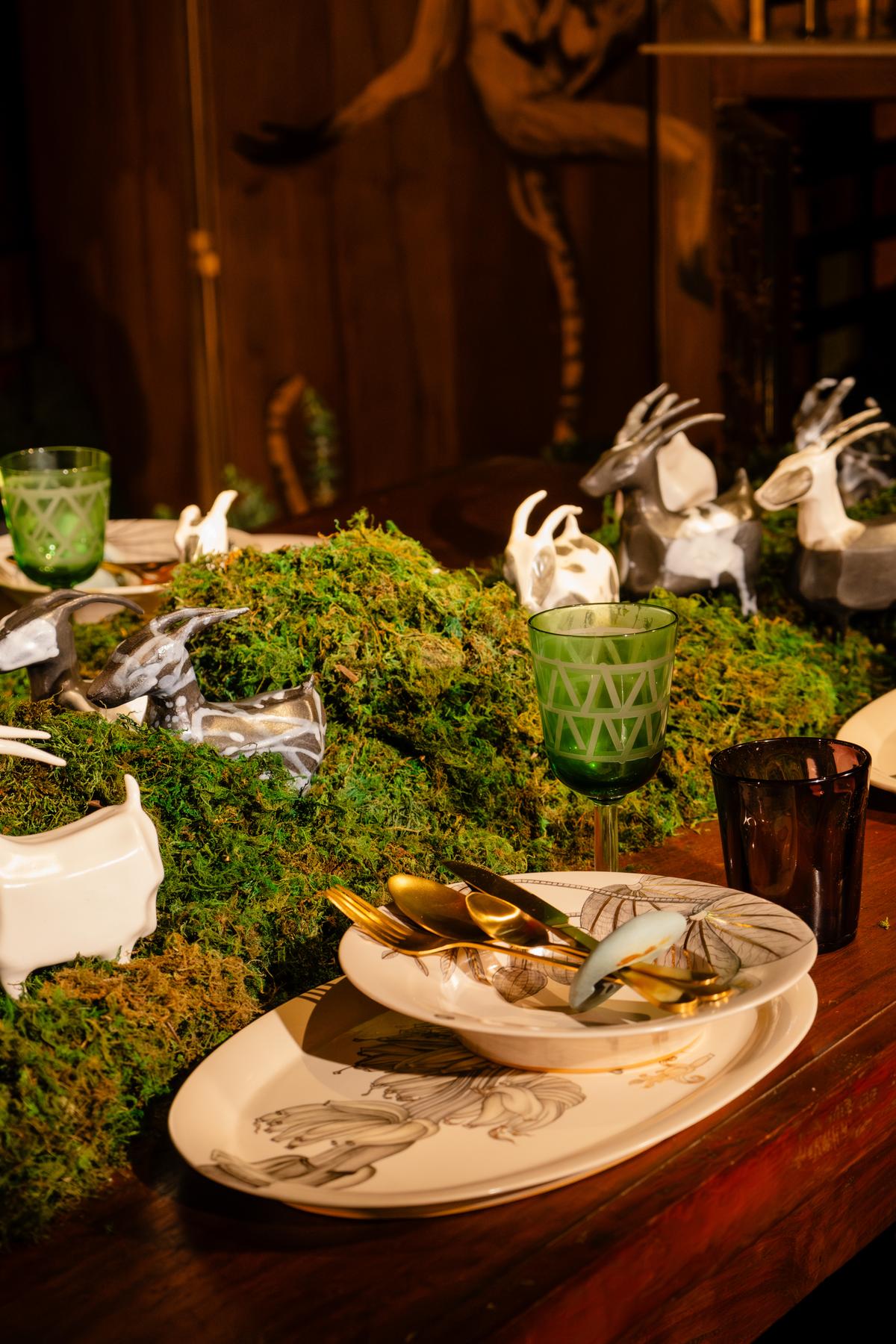
Sona Reddy for Nilaya Anthology
| Photo Credit:
Special arrangement
For Sona, the tactile nature of the table — the coolness of ceramics, the softness of moss, the rawness of natural textures — is deeply tied to memory. “Design becomes meaningful when it engages the senses,” she adds. “It’s not just about how it looks, but what it evokes.”
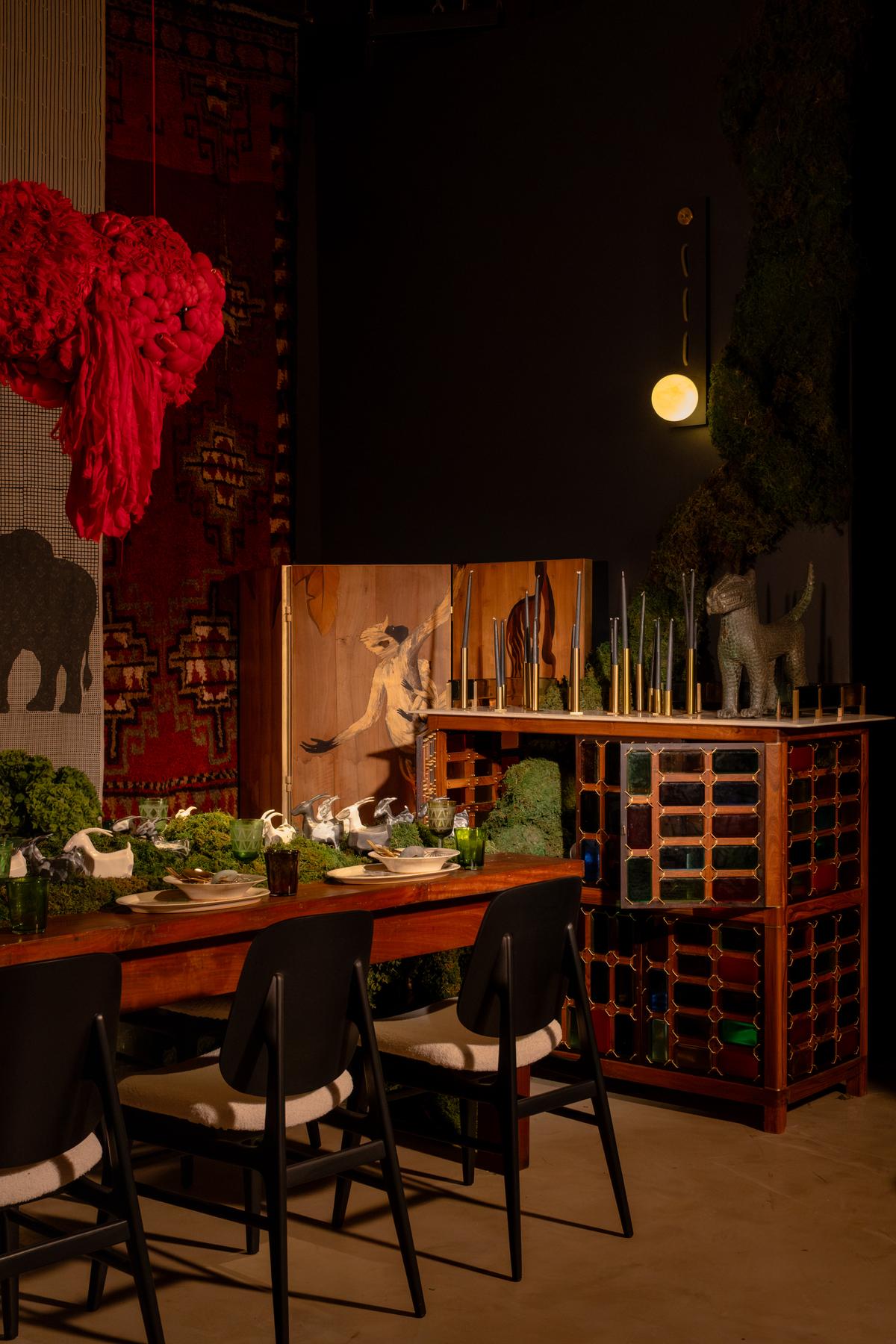
Sona Reddy for Nilaya Anthology
| Photo Credit:
Special arrangement
Though not conceived for Deepavali, her approach carries lessons that fit the season perfectly. The festival, after all, is as much about togetherness as spectacle — about beauty balanced by belonging.
A southern lens
The festive table is a quiet dialogue between the traditional and the global, believes Arun Gowda, architect and interior designer at Humming Tree in Kozhikode. Garlands of malli poo (jasmine) or tulsi (holy basil) leaves might drape loosely across the table, their fragrance mingling with the glow of brass diyas. Mismatched ceramics carry everyday charm, while ikat napkins and matte cutlery add modernity. It is a setting that feels both rooted and refreshed — earthy yet elegant. For Deepavali, Arun’s philosophy translates beautifully: start with what is local, layer what is personal, and let contrasts do the rest.
Sreejith Jeevan, the Kochi-based designer and creative head of Rouka, is of the opinion that the idea of a tablescape is still somewhat foreign to South India. “Traditionally, in the South, decoration and eating have always been two separate acts,” he explains. “If you look at an Onam meal, for instance, it’s just a long table with banana leaves — no flowers, no candles, no embellishments. The person serving comes from the front, and the focus is entirely on the food.”
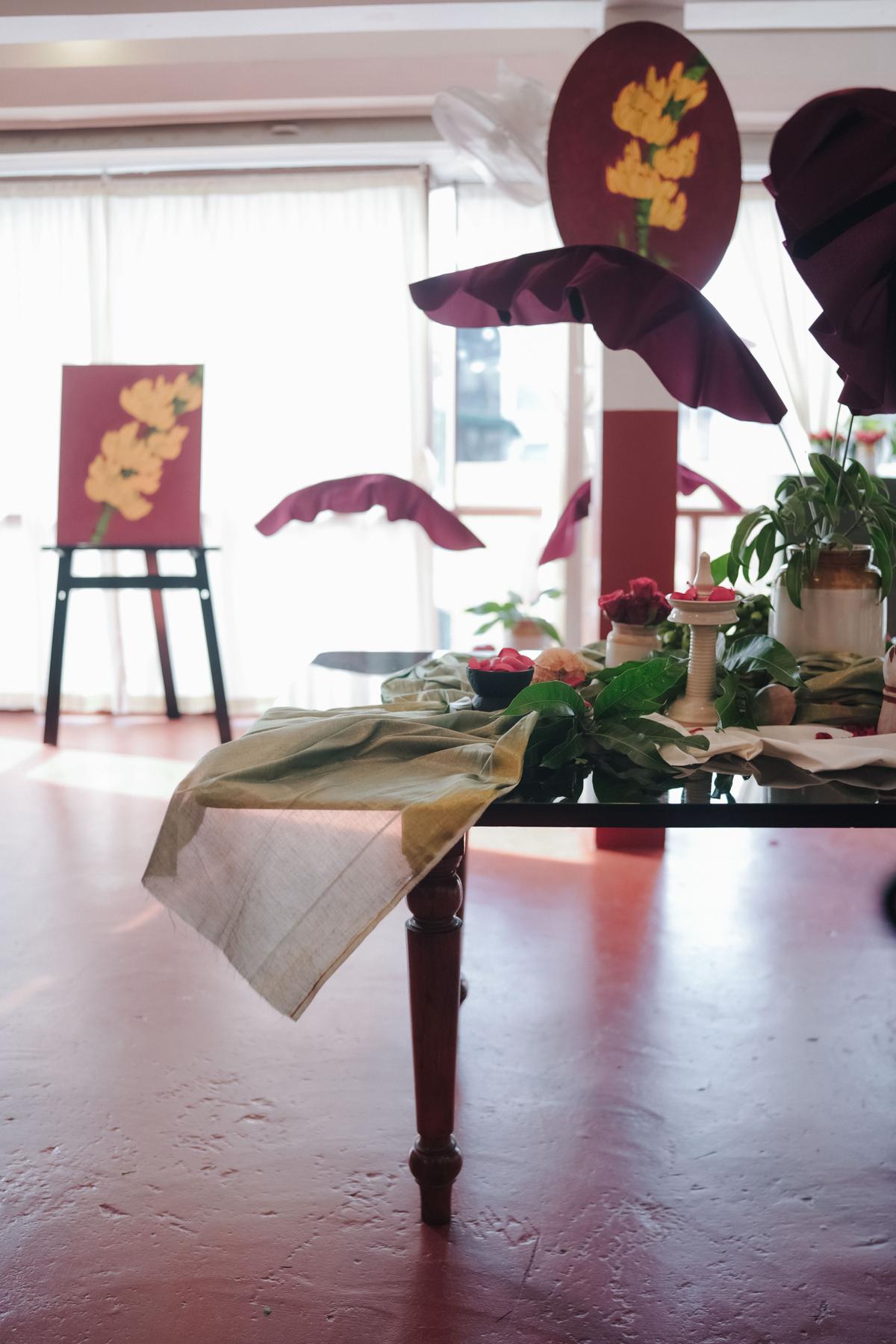
Sreejith’s tablescape
| Photo Credit:
Sreejith Jeevan
That simplicity, however, tells a story of its own — one of ritual, community, and rhythm. Yet, as Sreejith notes, the idea of decorating a table began to trickle in through colonial influence. “My mother used to talk about how, in my grandfather’s time, they’d host tea parties with lace tablecloths and porcelain — very British in aesthetic,” he says. “So for me, table settings were always associated more with Christmas than Onam. Deepavali wasn’t really celebrated in Kerala until quite recently.”
Sreejith’s tablescape
| Photo Credit:
Sreejith Jeevan
Instead of florid ornamentation, Sreejith’s tables are rooted in bounty from the land — a philosophy of material honesty. He collects objects from his travels: a stone sculpture picked up off a roadside stall, a piece of terracotta bought from a highway artisan, crushed kasavu fabric repurposed as a runner. “I like finding new meanings for everyday things,” he says. “Sometimes I just walk through a flower market or a pooja shop, pick up something unusual, and figure out how to use it later. The shopkeepers are often puzzled — they’ll say, ‘This is for rituals!’ and I’ll say, ‘Perfect.’”
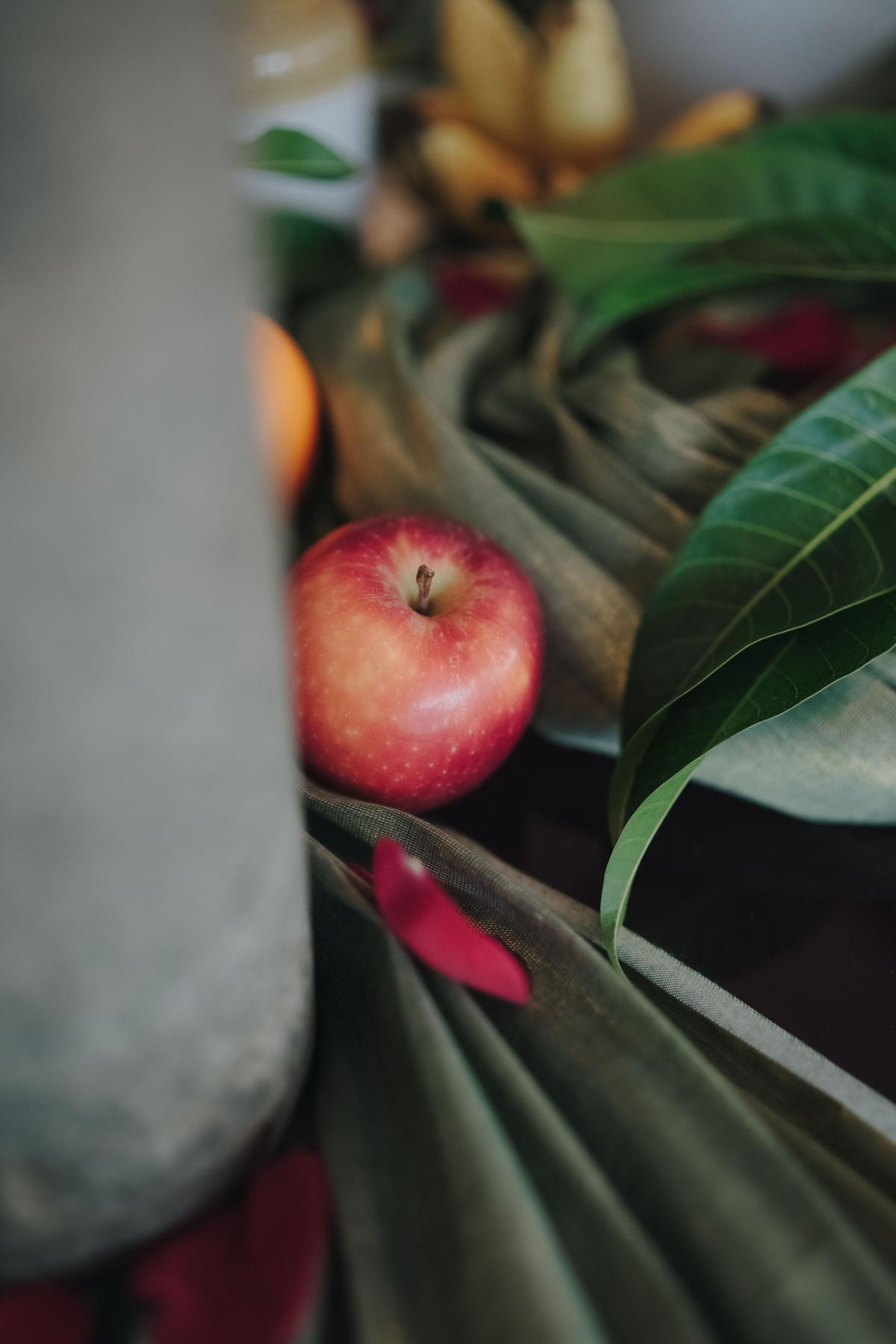
Sreejith’s tablescape
| Photo Credit:
Sreejith Jeevan
For Sreejith, tablescaping is not about mimicry or luxury, it is about reclaiming what already exists around you. “I like to decolonise design,” he says. “We don’t need imported objects to make something beautiful. We have terracotta, wood, fibre, metal — things with soul.”
And while his practice is not tied to Deepavali, his approach speaks directly to its essence — abundance, warmth, and improvisation. A modern festive table, he suggests, does not need to be extravagant to feel special. A few locally made objects, fresh flowers, and textures from home can tell a story of generosity that feels both grounded and deeply personal.
New mood
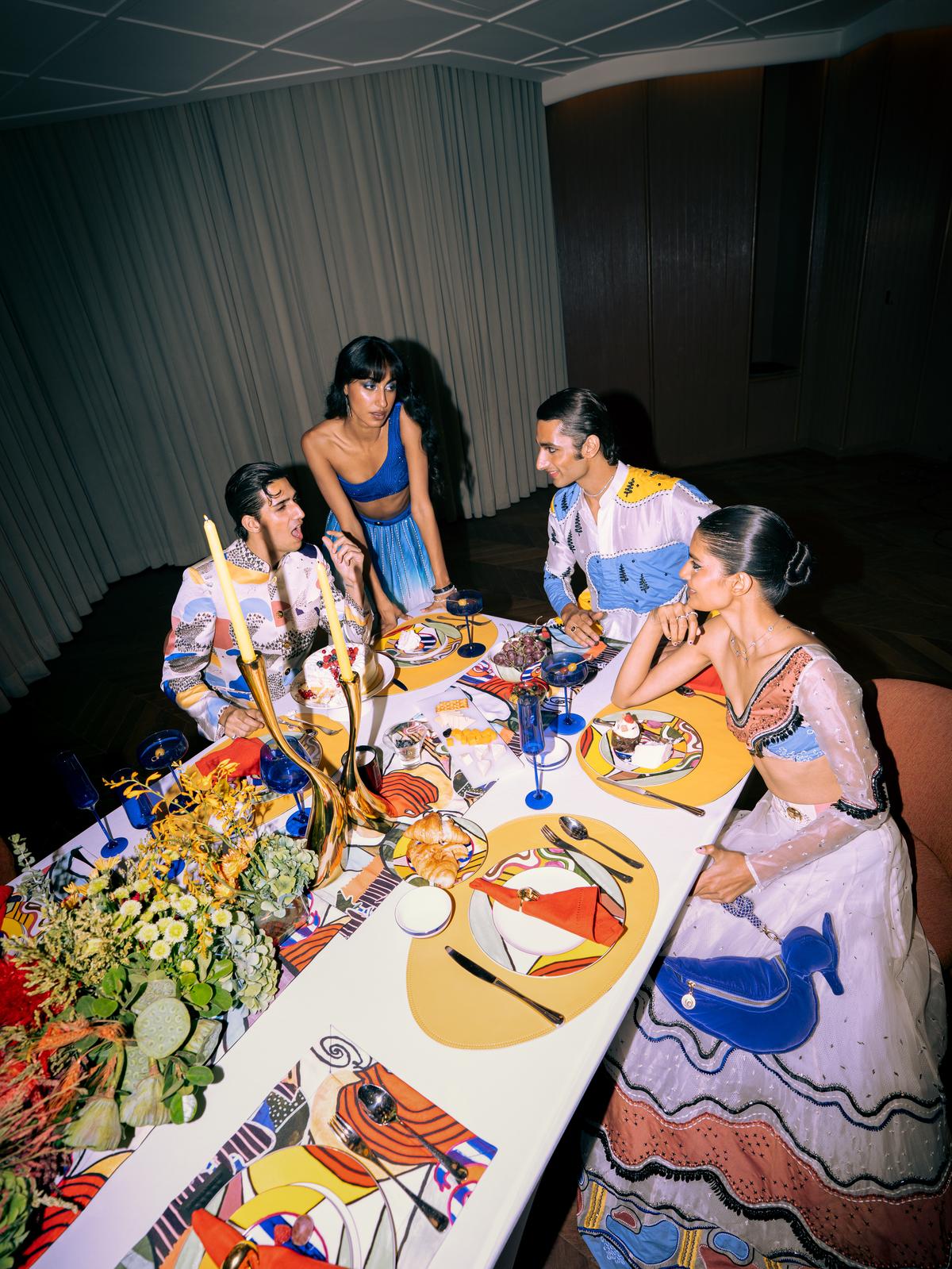
Shivan & Narresh’s tablescape is where fashion meets decor
And if the next generation of hosts has anything to say about it, the festive table will only get bolder. Take Delhi-based Shivan & Narresh’s new tableware collection — a playful, print-led take on luxury that is unapologetically modern. For younger hosts, it is less about heirloom silver and more about statement styling — a celebration of personal aesthetics like bold patterns, sculptural candle stands, vibrant glassware, and colour-blocked linens. It is Deepavali done differently — still full of warmth and togetherness, but with a distinct design edge.
